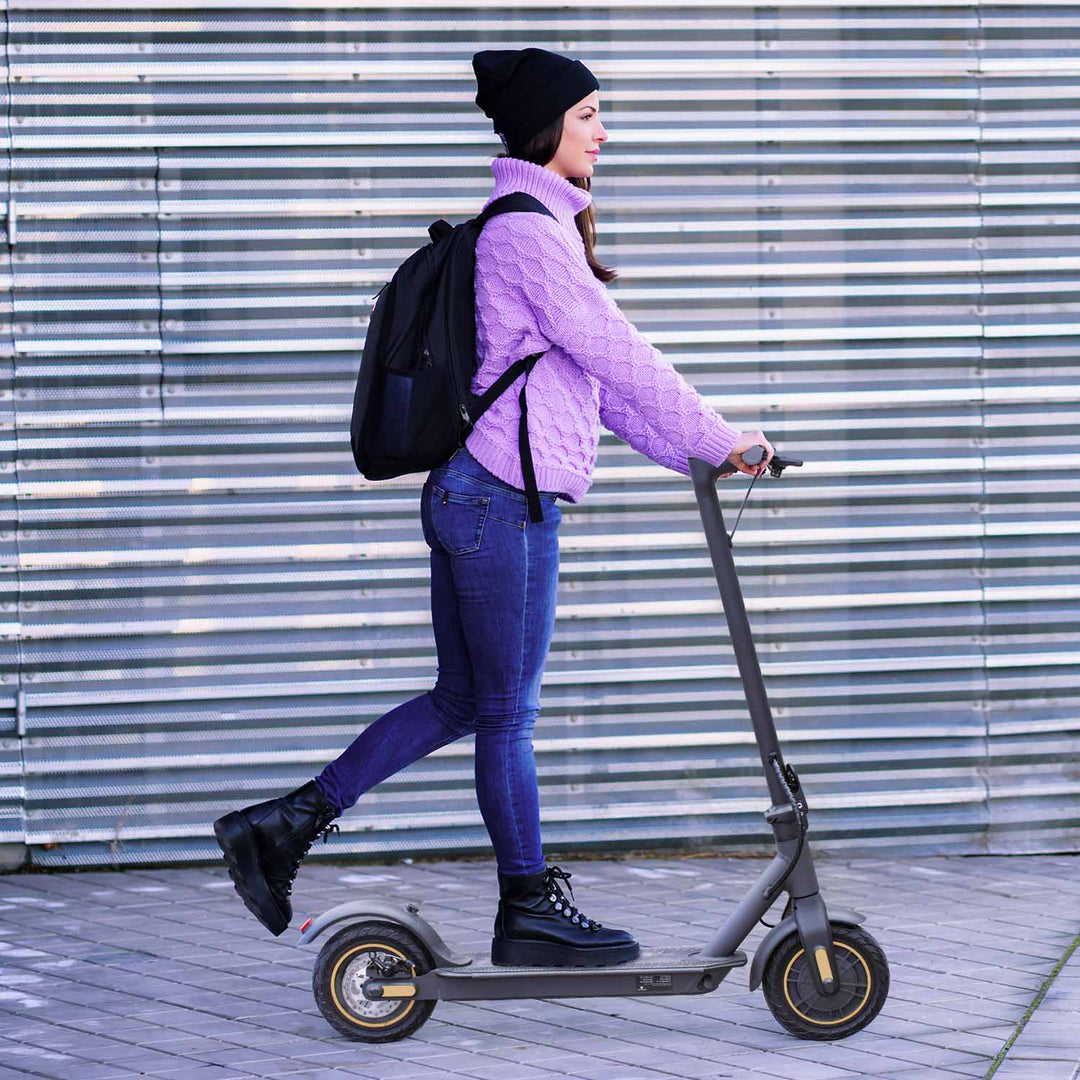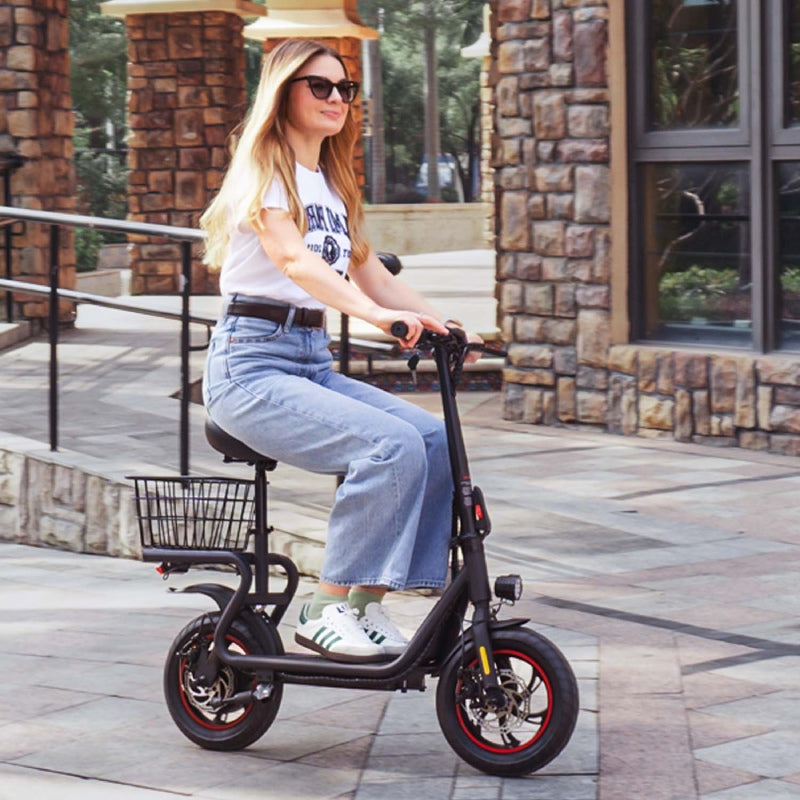How to Ride an Electric Scooter Safely in the Rain?
Table of Contents
- 1. Understand The Perils of Ride in the rain
- 2.Factors Influencing Wet Weather Riding
- 3.Navigating Light Rain: Essential Precautions for Riders
- 3.1 Check IP Rating
- 3.2 Reduce Speed
- 3.3 Increase Following Distance
- 3.4 Wear Proper Gear
- 3.4 Be Prepared for Changing Conditions
- 4. Avoiding Heavy Rain: A Prudent Decision
This article delves into the dangers of riding an electric scooter in the rain, explores the factors influencing scooter performance in wet conditions, and provides essential safety tips for riders.
1. Understand The Perils of Ride in the rain
Riding an electric scooter in rain significantly increases the risk of accidents and injuries. Reduced visibility due to rain impairs riders' ability to perceive obstacles, potholes, and other vehicles, mirroring the 46% increase in motorcycle crashes during rainfall reported by the National Highway Traffic Safety Administration (NHTSA) in 2022. Wet roads significantly reduce tire traction, doubling stopping distances, increasing the risk of collisions, especially at intersections.Moreover, water damage to electrical components can lead to malfunctions or even fires, as highlighted by Consumer Reports in a 2021 report. Rider safety is further compromised by cold, wet conditions which can impair control and lead to hypothermia.
Real-world accidents underscore these risks. A 2023 incident in Miami involved a rider losing control in the rain, resulting in severe injuries after colliding with a car. A London accident in 2022 saw a rider fall on wet pavement, sustaining a broken arm. Additionally, numerous reports in 2021 documented electric scooter fires linked to rain exposure.
2.Factors Influencing Wet Weather Riding
The performance and safety of electric scooters in rainy conditions can vary significantly depending on their design and build quality. Understanding these factors is crucial for riders to make informed decisions about their suitability for wet weather riding. Key factors include:2.1 IP Rating
The IP (Ingress Protection) rating is a two-digit code that indicates a device's resistance to dust and water intrusion. While higher IP ratings generally imply better water resistance, it's essential to note that these ratings are based on controlled laboratory tests and may not reflect real-world conditions. Prolonged exposure to heavy rain, even for scooters with high IP ratings, can still compromise electrical components and increase the risk of malfunctions.2.2 Tire Type
Tire type significantly impacts an electric scooter's performance in wet conditions.-
Pneumatic Tires: These tires provide better traction and shock absorption on various surfaces, including wet roads. The air cushion helps disperse water and maintain grip, reducing the risk of slipping and sliding. Studies have shown that pneumatic tires can improve braking distance by up to 30% on wet pavement compared to solid tires.
- Solid Tires: While solid tires are more resistant to punctures, they generally offer less traction on wet roads, increasing the risk of slipping and sliding. This is particularly true for solid tires made from hard materials like rubber or plastic.

2.3 Brake Type
The type of brake system plays a crucial role in ensuring effective stopping power in wet conditions.-
Hydraulic Brakes: These brakes offer superior braking performance and consistency, particularly in wet weather. The enclosed hydraulic system is less susceptible to water contamination, ensuring reliable braking even in challenging conditions. Studies have shown that hydraulic brakes can reduce stopping distances by up to 20% on wet pavement compared to mechanical brakes.
- Mechanical Brakes: Mechanical brakes, while less expensive, can be less reliable in wet conditions. Water can affect the braking mechanism, reducing its effectiveness. Additionally, mechanical brakes require more effort from the rider to achieve the same braking power as hydraulic brakes.
2.4 Frame Material
The material used for the scooter's frame can also influence its durability in wet conditions.-
Aluminum and Magnesium: These lightweight materials are generally resistant to corrosion but can be affected by prolonged exposure to water. Aluminum frames, in particular, can corrode over time, especially if exposed to salt or harsh chemicals.
- Steel: Steel frames are more susceptible to rust, but they can be treated with protective coatings or galvanization to enhance their resistance to corrosion. Proper maintenance, such as regular cleaning and drying, is crucial for preserving the integrity of steel frames in wet conditions.
Learn More about Ride E-Scooter Safely:
When Using Electric Scooters, Be Cautious of Safety Risks
Mastering Safety with the Superfun M2 Urban Scooter
Safety Guide for the Superfun S10Pro Electric Commuter Scooter
3.Navigating Light Rain: Essential Precautions for Riders
If riding in light rain is unavoidable, prioritize safety with these steps:-
3.1 Check IP Rating
Opt for scooters with higher IP ratings (IPX4 or higher) for light rain conditions.
-
3.2 Reduce Speed
Maintain a slow and steady pace to account for reduced traction. Aim for speeds that allow you to come to a complete stop within a shorter distance on wet pavement.
-
3.3 Increase Following Distance
Leave ample space between yourself and other vehicles. This allows more reaction time in case of sudden braking or maneuvers due to slippery conditions.
-
3.4 Wear Proper Gear
Invest in waterproof clothing, gloves, and a helmet. Wet clothes can restrict movement and reduce your ability to control the scooter.
-
3.4 Be Prepared for Changing Conditions
Remember, rain intensity can change quickly. Even if you start in light rain, be prepared to find alternative shelter or transportation if the conditions worsen.
4. Avoiding Heavy Rain: A Prudent Decision
Heavy rain dramatically amplifies the risks associated with riding an electric scooter. The following factors make riding in such conditions extremely hazardous:-
4.1 Extreme Visibility Impairment:
Torrential rain significantly reduces visibility, making it nearly impossible to see obstacles, potholes, or other vehicles. This greatly increases the risk of collisions.
-
4.2 Aquaplaning:
Heavy rain can cause water to build up on the road, leading to aquaplaning. This occurs when a vehicle's tires lose contact with the road surface due to the layer of water, resulting in loss of control.
-
4.3 Severe Traction Loss:
Saturated roads offer significantly reduced traction for scooter tires, making it incredibly difficult to maintain control, especially when braking or cornering.
-
4.4 Increased Risk of Electrical Damage:
Prolonged exposure to heavy rain can lead to severe water damage to the scooter's electrical components, potentially causing short circuits, fires, or permanent damage.
-
4.5 Rider Safety:
Heavy rain can lead to hypothermia and reduced visibility for the rider, further compromising safety.
Given these critical safety concerns, it is strongly recommended to avoid riding electric scooters in heavy rain conditions. Prioritize your safety by choosing alternative transportation methods, such as public transport, ride-sharing, or walking.
Riding an electric scooter in rainy conditions poses significant safety risks due to reduced visibility, slippery roads, and the potential for electrical damage. While some scooters may be better equipped to handle wet weather, it is crucial to prioritize safety and avoid riding in heavy rain altogether.
By understanding the factors that influence scooter performance in wet conditions and following essential safety precautions, riders can make informed decisions to protect themselves and their scooters from the hazards of rainy weather. Remember, safety should always be the top priority when riding an electric scooter, especially in inclement conditions.











Dejar un comentario